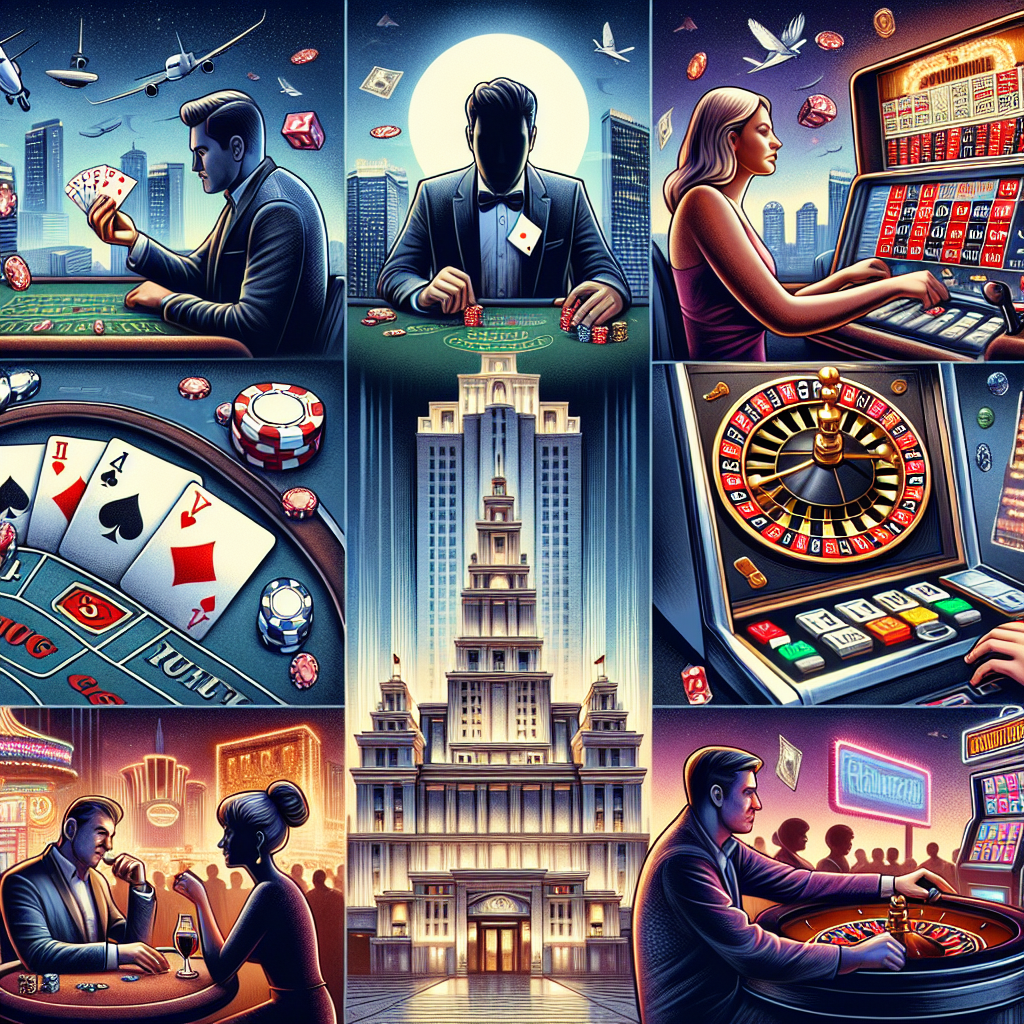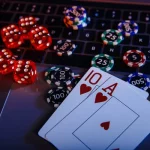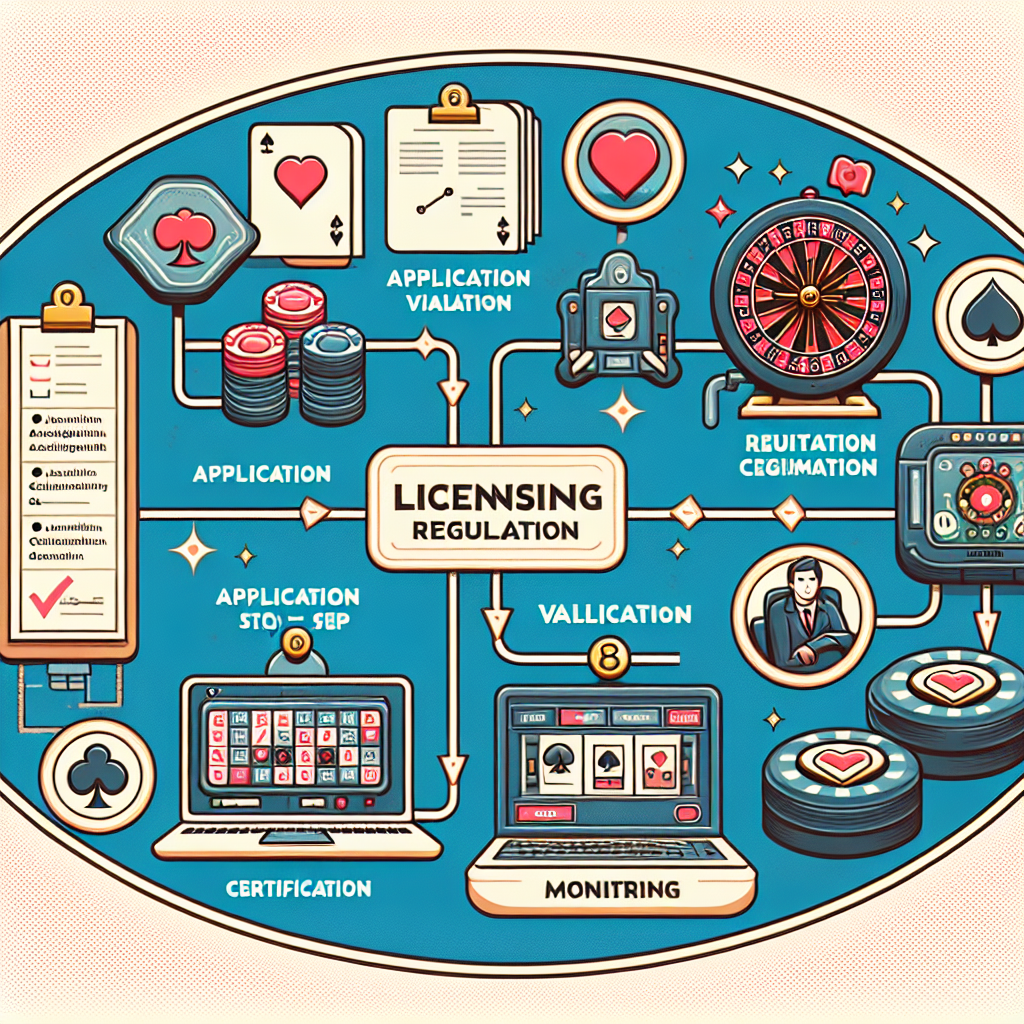BLACKJACK is a card game often played (for money) especially in casinos.
The aim of the game is to beat the bank (dealer). In doing so, one must try to get closer to 21 points than the bank. If the player exceeds 21 points he has lost, regardless of what the bank has.
Cards with pictures (Jack, Queen, King) are worth 10 points. Cards 2 – 10 have the value they indicate. The ace is worth either 1 or 11 points (deciding which value is closest to 21 but does not exceed it). If the dealer has as many as the players it is a stand-off (tie).
The game is played with 1 to 6 decks of cards (i.e. 52 to 312 cards) that are shuffled. At Holland Casino, one uses 6 decks, but one may find the game elsewhere with fewer cards. In the United States, one finds with one to six decks of cards. In general, the fewer cards used, the more favorable the player’s odds (see #CardCounting). The cards are reshuffled when 30 to 50% of the available cards are left (in the case of a hand shuffle), at the beginning of another round of play or, as is usually the case nowadays, in the shuffle machine after each round of play, which means that the cards are shuffled continuously. All players play individually against the bank (dealer). The game is almost always played with face cards. After the players place their bets, the bank(dealer) deals clockwise two cards to each player and himself one card (in America 2, one of which is closed). If a player then already has 21 points with the first two cards, i.e. an Ace with a 10, Jack, Queen or King it is called a blackjack and the player wins 1.5 times his or her bet, unless the bank also has blackjack, then it is a tie (stand-off)). The blackjack is paid immediately if the dealer no longer has a chance to get a blackjack himself (The bank’s face-up card is not an honors card).
If the dealer can still get a blackjack himself, the bet remains until the dealer gets the second card. If the player does not get blackjack, play continues. In each case the players indicate whether they want to split or double, have another card, or pass. If a player gets more than 21 points in doing so, the player has lost. When all players have passed, the croupier deals cards for himself. The croupier stops when he reaches 17 or more points. Here the Ace counts as 11 unless it exceeds 21. In some American casinos the bank draws through when it has 7 or 17, so on totals like 6, A or 2, A, 4 or 3, A, A, 2 the bank takes one or more cards, where European croupiers must pass (Dealer hits soft-17). When the 17 is reached, the croupier’s points are compared with the player’s. If the player has more, the player wins once the bet (so he gets his bet back twice). If the score is equal, the player keeps his bet. If the player has less points, then the player loses the bet to the bank. Depending on the game situation you can double your bet, split your cards or insure your bet during the game. Doubling (double) Doubling doubles your bet and leaves you with only one card from the dealer. In Europe, this option is often only available if the initially dealt two cards have reached a point total of 9, 10 or 11.
Double is also possible when there is a double score of 9/19 or 10/20.
However, because one must have a total of 9,10 or 11, a double of A,8 on which a 2 falls counts as 11, not 21. This last card is placed directly under the first card or (in America) turned 90 degrees with respect to the first two. In America and in a limited number of European casinos (e.g. Knokke le Zoute) it is often allowed to double any two cards. Here it is advantageous to double hands like A,7 against a small card in the bank. And a double of A,8 with a 2 usually (but not everywhere) counts as 21. Splitting is possible when the first two cards received are of equal value or rank (some casinos allow splitting pairs like 10, Jack or King, Jack or King, Queen and others only 2 Kings, 2 Queens, 2 Jacks or 2 tens). After splitting, the same bet is placed with the second card. Each individual bet then belongs to the individual cards. From then on, both cards are played as two separate games.
If one splits two aces then one receives only 1 additional card on each ace. If this again is an Ace, one is generally allowed to split again, if the player does not want to, the player is not allowed to take another card. This is very annoying because then one is left with 12. Sometimes one may buy more cards on a split Ace, provided that the Ace must be counted as 11; A, 5, 6 then counts as 22 and one has lost. Splitting, by the way, makes getting blackjack impossible; a blackjack combination here simply counts for 21 points. Some casinos allow resplitting a third, fourth pair and so on, others do not, or only up to a certain number; usually 4 hands. Usually doubling is also allowed after a split, but some casinos do not allow doubling after a split, which is disadvantageous to the player. Insurance is possible when the dealer’s first card is an Ace. Insurance involves placing an additional bet on the insurance line equal to half the original bet. If the dealer gets blackjack then your insurance bet is paid out twice and compensates you for the loss of your lost bet. If the dealer does not have blackjack then the insurance bet is lost. If a player has blackjack, and the bank has an Ace, then instead of insurance you are offered the option of accepting a 1 to 1 payout instead of 1.5 to one, or continuing to play at the risk of a stand-off if the bank also has blackjack (even money). In many American casinos, the hole-card rule is in effect. The croupier takes a second face-down card and checks if he has a 10, Jack, Queen, King or Ace face-up, whether the bank has blackjack. If this is the case, the game ends and all players, who do not also have a blackjack, lose.
This rule is beneficial for the players, because they have less risk when they want to double or split against a 10 or Ace in the bank.
Sometimes the bank does not take a second card, but the rule is still in effect. This means then that a player can only lose his original bet against a blackjack in the bank. Any splits and doubles are then retroactively undone. Surrender is a player’s option to refrain from continuing to play a given hand. One then loses only half of his bet. This is especially beneficial with totals like 16 or 15 against a 9 or 10 in the bank. There are different versions of surrender. Some casinos do not allow surrender against an Ace; if the banker has an Ace, one cannot opt for surrender: one can insure oneself, the house argues. There are two variations of this rule: early surrender and late surrender. With early surrender one must surrender before the first player after the dealer takes a third card. The advantage is that against a 10 or Ace one can surrender even if it turns out later that the bank has one. With late surrender the croupier first checks if he has one, if that is the case one cannot surrender (if the croupier does not take a second card but the hole card rule is in force, this is done afterwards). Especially in Belgium one can surrender when it is one’s turn, elsewhere before it is the first player’s turn.
Surrender is found mainly in Belgium and America. Early surrender in its pure form rarely arrives, more often in combination with the prohibition of surrender against an Ace. Needless to say that early surrender (also against an Ace) is more favorable for the player than early surrender (except against an Ace) and that late surrender is the most unfavorable variant of this rule, since one cannot surrender against any of the bankers. In basic strategy, one surrender more often in pure early surrender than in late surrender.
Some casinos offer bonuses, such as an extra payout on a particular combination of 21.
A hand of 21 on 7, 7, 7 is the most famous of these. In the “low-limit” section of Holland Casino, in addition to a payout of 1 times the bet, one gets a glass of Champagne on 3 sevens, provided the player has not split his first pair of sevens. If a player splits the sevens and then a third 7 falls on top of the first 7 and he does not decide to continue splitting, after which he draws a fourth 7, this counts as “ordinary” 21 and the bonus is forfeited. If you have the bonus 7-7-7 in Holland Casino, not only do you immediately receive 1 times your bet and a glass of Champagne, but your original bet remains in place until the end of the round and you can win again (if the bank buys itself to death or has 20 or less), stay in place (the bank has 21) or lose (the bank has ). In the first case one wins twice his bet and a glass of Champagne, in the second case once the bet and a glass of Champagne and in the last case only the glass of Champagne, but one has not lost any money, despite the in the bank.
Rarer is a bonus on 6, 7, 8 in one suit, for example clubs 6, clubs 7, clubs 8. In some German casinos, a split 10 on which an Ace falls is considered blackjack (not the other way around!). This is to entice players to split tens, although even with this bonus rule considered, this is not statistically more advantageous to the player. A bonus often offered in Belgium consists of paying out more to the player who has a winning hand relative to the bank with 5, 6, 7 or more cards. For 5 cards one pays 1.5 times the bet, for 6 cards 2 times and for 7 cards or more even 5 times the bet. Once again, this is a much more interesting bonus than the glass of champagne (cost 2 euros) Especially the five-card situation and winning hand occurs frequently and also provides extra excitement. These situations occur most often with strong cards from the bank (9, 10 and Ace) because then it is appropriate to ask for a card anyway with a point total between 12 and 16.
The optimal strategy varies with the different rules, with which the game is offered. However, the same buying strategy applies to all variations. It is best to buy against a 2 or 3 in the bank at 12 or less and pass at 13. Against a 4, 5 and 6 one passes already at 12. Against higher cards, one should buy at 16 and pass at 17. For “soft” hands (hands with an Ace, where one can count the Ace as 11, without exceeding 21), one should always buy at 7/17 (hands like A,6) or less. Also, one buys at 8/18 (e.g. 7,A) against an Ace, 10 or 9 (many players find this strange, but it is really statistically better). Against other cards in the bank, one passes at 8/18. Doubling: With 9 one doubles against a 3, 4, 5 or 6. With 10 and 11 if one has more than the bank (The bank has 2 to 9, respectively 2 to King), unless the bank has a chance of getting blackjack.
In America one doubles 11 against a 10 (hole card rule) and never here (where the game is played with only one deck of cards, it is recommended to double 11 against an Ace). The strategy for splitting depends on other rules; if it is not allowed to double after a split, splitting becomes more unattractive. In America, one always splits Aces and eights. Without a hole-card rule, against a 10 one splits a pair of Aces but not a pair of eights, and against an Ace one never splits. One can calculate that taking insurance or even money is not attractive. It pays 1 against 2, while there are 9 non-ten to 4 tens. This makes the bank’s advantage on such bets 1/13th, or more than 7%, While players with proper application of basic strategy can reduce their disadvantage to well below 1%.
After a game has been played, the cards are usually not reshuffled. Instead, one proceeds with the remaining cards in the slipper.
This can be an advantage for the player: he pays close attention to which cards have already been used and knows which cards are still in the slipper. Such a player is called a card counter. At some casinos he is considered a cheater. It favors the player if many small ones are drawn and few images. If a disproportionate number of high cards remain in the cards still to be played, the players’ chances increase. After all, the bank must pass on totals below 17, which increases the chances of the bank buying itself broke (or: dead). Players may pass in that case. Also, players will have more luck at doubles; the chances of drawing a 10 for a total of 19, 20 or 21 increase. The odds of getting blackjack also increase. And, although the odds of this happening are equal for both the player and the croupier, it still benefits the player; after all, he receives 1.5 times the bet if he wins with a , while he does not have to pay another half bet to the bank if the bank wins with blackjack. If enough small ones are out, the player’s disadvantage may even turn into an advantage. With average composition, with a disadvantage of 0.56%[1], one can expect, that out of every €1000 bet, one will get back €1000 – €5.60 = €994.40. If the number of tens left to play increases and the number of small ones left to play decreases, the disadvantage drops to 0% and can turn into an advantage. In that case, you can expect to get back more than you wagered. Card counters can use this technique to recognize these situations and will bet high when they occur. Also, players may deviate from basic strategy if they know that there are many tens to play over. According to basic strategy, one should buy in at 16 against a 10. However, if there are too few minor cards left and too many tens, the chances of buying out increase. It is better, in these cases, to pass and hope that the bank buys to bust. Another example is doubling a 9 against a 2. Normally one does not do that, but card counters can know in favorable situations, that they have more chance of getting a ten and double anyway. The bank, with those extra tens with a 2, is actually more likely to buy themselves out. In the past, there have been groups of people who could make a profit playing blackjack by counting cards. Nowadays this is no longer possible, because casinos play blackjack with more cards, and especially because they are not dealt completely or almost to the end, but are reshuffled with a large number of cards still to go. This greatly reduces the advantage of card counting, so that card counters also have a negative profit expectation.




